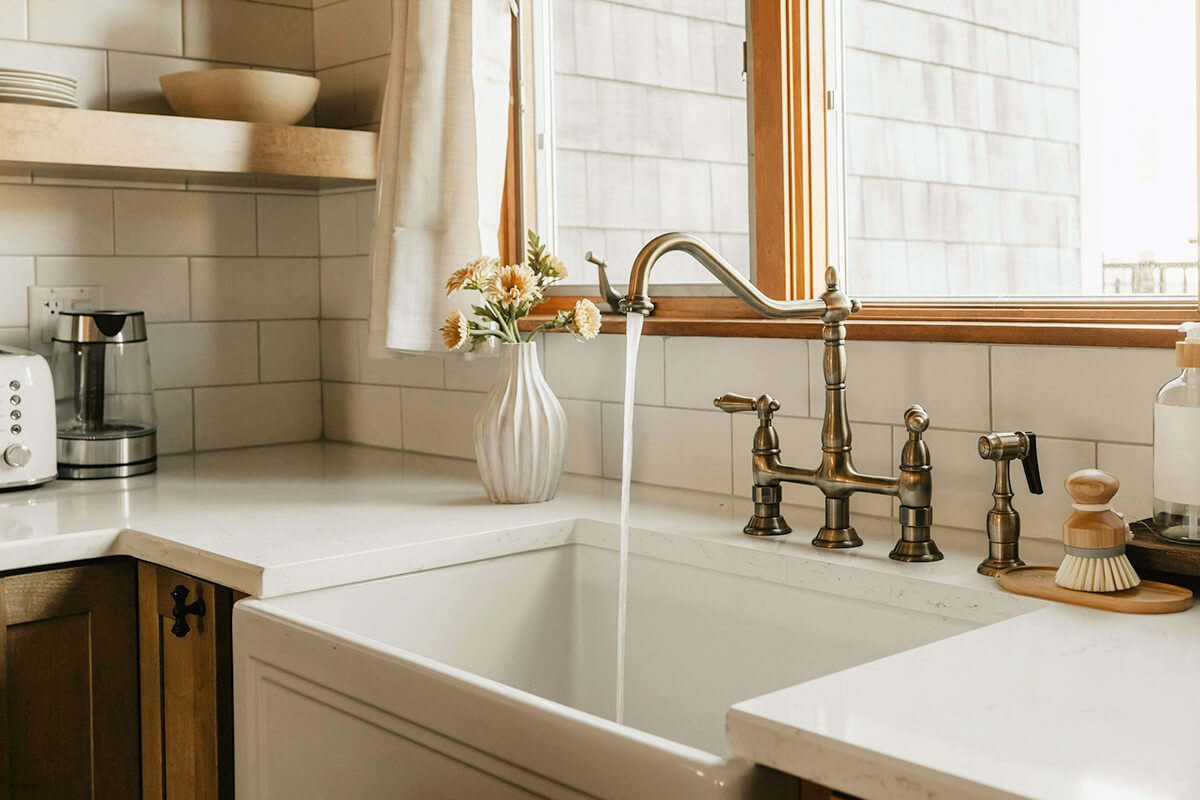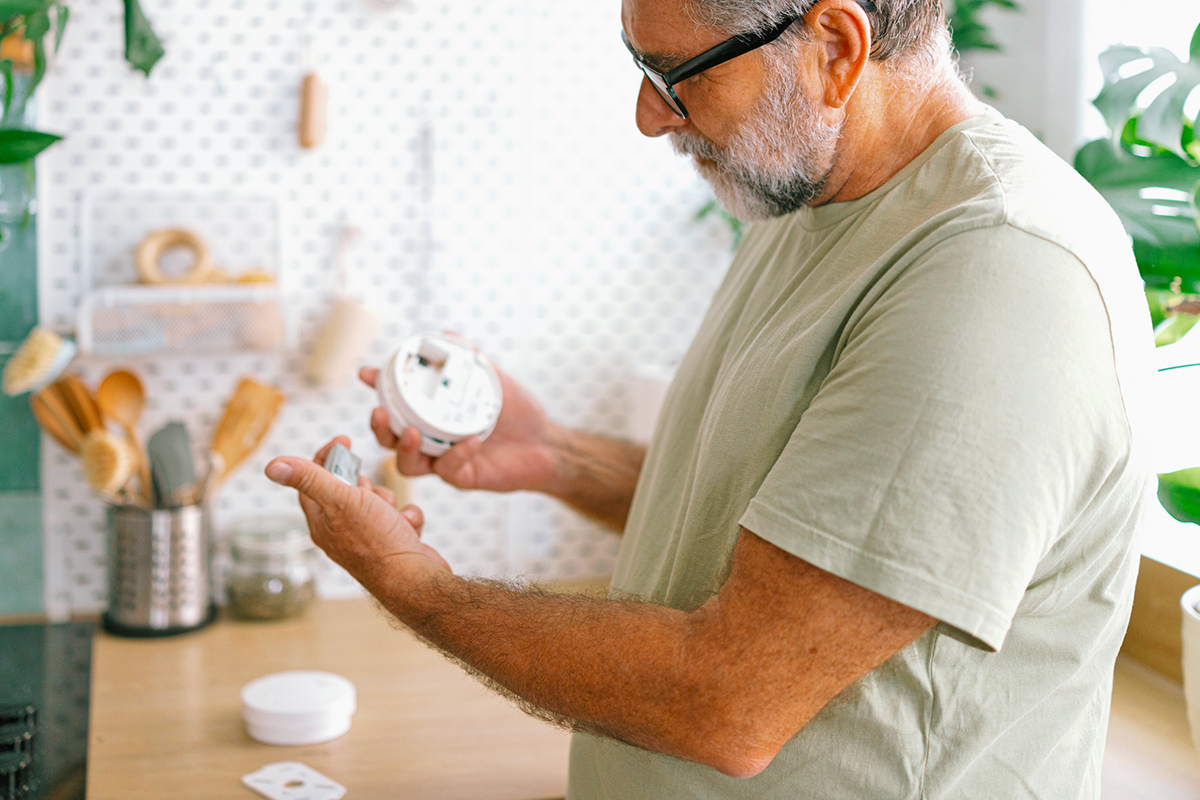Our eyes can deceive us. You may think your home is spotless after your weekly cleaning routine, but in reality, microscopic germs are hiding in plain sight, and dust and dirt are collecting in places you don’t even realize. Here are 10 household items that are way dirtier than you think, and should be given…
1. Pillows
While most people clean their pillowcases every few days or weeks, the same can’t be said for the pillows themselves. But sweat, drool, and oil can seep through the pillowcase and be absorbed into the pillow, creating a bacteria-rich environment. These invisible germs can lead to acne or eczema breakouts and other health issues such as allergies and breathing difficulties. WebMD suggests washing your pillows every three to six months to keep them clean — just consult the laundry tag for specific instructions.

2. Ceiling Fans
When you look up at a ceiling fan, you tend to see only the underside of the blades. But the tops are notorious for attracting dust. Anytime you turn on the fan, you’re unknowingly scattering tiny dust particles throughout the room. Thankfully, there’s a hack for cleaning those fan blades without getting dust all over the floor and furniture, and all you need is a pillowcase.
More from our network
House Outlook is part of Inbox Studio, which publishes content that uplifts, informs, and inspires.
3. Remote Controls
At the end of a long day, many of us just want to turn on the television and decompress. But when you grab the remote, you’re transferring a day’s worth of bacteria from your hand to the buttons. This is especially troublesome if you live in a large household full of TV lovers, where everyone will be touching the remote at one point or another. To keep the remote control clean, remove the batteries, dampen a microfiber cloth with rubbing alcohol, and wipe down the device at least once a month.

4. Dishcloths
Dishcloths, kitchen sponges, and other dishwashing tools trap bacteria in their pores and need to be cleaned themselves. If you don’t regularly do so, your dishwashing will be all for naught, as you’ll be spreading microscopic germs onto dishes that look clean to the naked eye. Wash your dishcloths in hot water with laundry detergent, just as you would wash any soiled item of clothing. As for soft sponges, Food Network suggests placing them in a microwave-safe bowl, filling the bowl with water, and running the appliance on high for one minute to sanitize the sponge. Warning: Never put anything metallic into the microwave, such as steel wool or a chain-link scrubber.


5. Coffee Maker
Daily coffee drinkers may have no idea just how dirty their coffee makers truly are. It’s important to clean the machine every one to three months, depending on how often you use it. To flush out the device, fill the reservoir with white vinegar and run the coffee maker as you normally would — this removes any bacteria and dirt that’s been sitting in there. Then run the machine through two more brew cycles using plain water, which helps remove the vinegary taste.

6. Doorknobs
Doorknobs are among the most common touchpoints in any home, and we often reach for them without thinking about the sneeze we just covered or the neighborhood cat we petted earlier in the day. At least once a week, take a damp, soapy cloth or disinfectant wipe and give the knob a thorough clean to help keep that bacteria at bay.
7. Kitchen Sink
This may be unpleasant to hear, but a CNN Health article warns that kitchen sinks contain more fecal bacteria than flushed toilets. In addition to that grotesque thought, think of all the raw poultry and other bacteria-ridden foods you may have prepared in the sink at one time or another. This is why it’s important to scrub your sink once a week with a disinfectant that contains bleach. You should also sanitize the drain once a month by pouring down a mixture of 1 teaspoon of bleach and 1 quart of water.

8. Light Switches
Light switches are commonly overlooked when we’re cleaning, even though they’re touched several times a day. To make matters worse, Lancaster General Health notes that the heat emanating from light switches makes them a breeding ground for bacteria, and certain estimates have found they contain about 217 bacteria per square inch. Clean your light switches regularly using a disinfectant wipe or a microfiber cloth moistened with an all-purpose cleaner.
9. Window Blinds
Window blinds attract dust and occasional stains, especially on the less visible, outward-facing side. If you have plastic blinds, use a clean microfiber cloth, warm water, and mild dish soap to wipe them down every week or two. Water can damage wooden blinds, so for those, use a feather duster or bristled brush to get rid of dust and dirt. For fabric blinds, vacuum with a brush attachment to remove any loose dirt or dust; for stubborn stains, dab gently with a clean rag dipped in warm water and dish soap.

10. Dishwashers
Dishwashers may be able to clean your dishes, but they don’t always clean themselves as effectively as they should. WebMD notes that you can find up to 74 species of bacteria in the average dishwasher, including some that are drug-resistant. To thoroughly clean the inside of your dishwasher, here’s what Whirlpool recommends: First, remove and empty out the filter. Then add two cups of white vinegar to a dishwasher-safe bowl, place it on the lower rack, and run a normal cycle without detergent. Lastly, sprinkle one cup of baking soda on the bottom of the appliance and run a hot water cycle.
Now that we’ve alerted you to these potential problem areas, try to incorporate them into your regular cleaning routine. The more you stay on top of these bacterial hot spots, the more confident you can be that your home is a clean and healthy space.

















